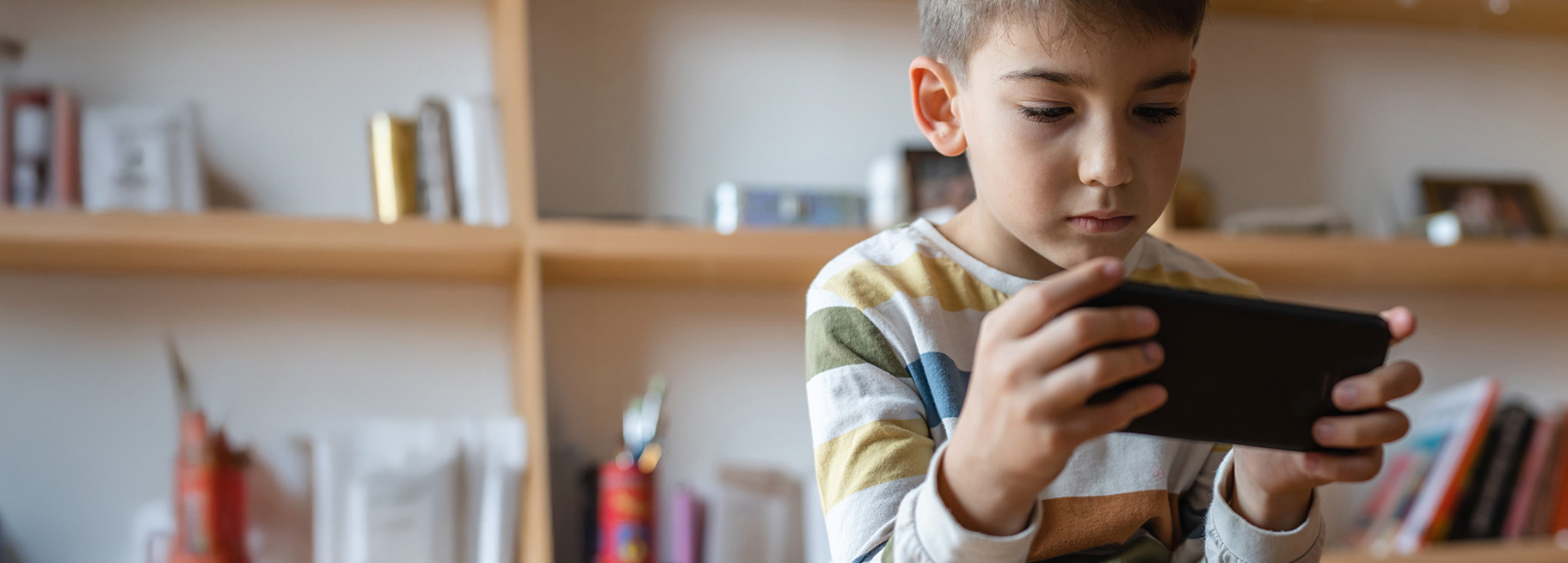
Article at a Glance
When asked if he ever sees kids using screens to avoid stress or emotions, Dr. Matt Allen has an emphatic answer.
“Every single day!” he says. “I will see children as young as two crying until they get a phone or a tablet, and they are not learning how to handle those emotions in a healthy way.”
According to a 2022 survey by Common Sense Media, teens spend an average of 8 hours and 39 minutes daily on screens for entertainment—excluding school or homework. That figure jumps even higher when factoring in multitasking across platforms. Another study found that 65 percent of teens were addicted to smartphones.
It’s no longer controversial to say that smartphones and social media can be addictive, especially for youth. From engineered engagement loops to fear of missing out (FOMO), today’s digital tools are built to pull kids in—and keep them there. And for many teens, this can spiral into a behavioral addiction that impacts their health, relationships, and development.
In a continuing series, Utah Valley Pediatrics is examining the link between multiple teen issues stemming from dependence on smartphones and social media. Today, we’ll look at the symptoms and causes of teen addiction and what parents can do to alleviate the side effects of too much screen time.
Behavioral addiction occurs when someone compulsively engages in an activity, even when it negatively affects their life. Unlike substance addiction, behavioral addictions don’t involve a chemical, but they stimulate the brain’s reward system in similar ways, particularly through dopamine release.
“I think behavioral addiction refers to a pattern of compulsive interactions with certain behaviors—like using smartphones, gaming, social media, or watching videos—that leads to significant impairment or distress in someone’s day-to-day life,” says Allen, DO, who works out of Utah Valley Pediatrics’ Saratoga Springs office. “It’s very similar to substance addiction, since both can drive dopamine release, just with less social stigma, and it can be just as harmful and much more accessible.”
Apps, games, and platforms are designed with engagement in mind. Infinite scrolling, “likes,” notifications, and filters are all part of the experience, and all increase the likelihood of overuse.
There are several reasons smartphones and social media are especially addictive for adolescents.
Every like, message, or streak activates the brain’s reward system. For developing brains—especially those still learning impulse control—the pull of these dopamine “hits” is powerful.
“Some of the most harmful aspects are infinite scrolling (no end point), setting ‘streaks,’ or time constraints on when you need to reply,” Allen says.
These features create urgency and trap users in a cycle of needing to engage.
Fear of missing out and the desire for social validation are powerful motivators for teen behavior. Platforms constantly update with what peers are doing, saying, or posting, making teens feel they need to be online or risk being left out.
“I believe those are some of the main driving factors that lead to addiction,” Allen says. “I have seen studies where they ask kids if they would like to not have a smartphone or social media, and they always say no. But if you state that everyone will be giving them up, then it is an almost unanimous vote in agreement. I think many kids would love to be free of social media.”
A Pew Research Center study found that 72 percent of US teens reported feeling peaceful when they were without their smartphones. The same study noted that 38 percent of teens admit to spending too much time on their phones.
Teens also use screens to escape uncomfortable emotions—boredom, anxiety, sadness. While this may offer short-term relief, it can block the development of healthy emotional coping skills.
Allen sees this regularly.
“I often see teenagers who struggle to have conversations or make eye contact,” he says. “I will also note that they have very few hobbies outside of technology, and exercise habits are often very minimal or absent completely.”
What does tech addiction look like? Allen points to several signs:
These behaviors often escalate slowly, so parents may not notice until the addiction is entrenched.
The impact of excessive phone and social media use is well-documented:
“I see teenagers every day struggling with anxiety and depression, and these numbers have increased greatly since the introduction of smartphones,” says Allen, who recommends The Anxious Generation by Jonathan Haidt for a deep dive into the data. “I see teenagers who exercise rarely and spend hours on their phone each day. This often will occur at night when they should be sleeping, and this can be a huge driver of worsening mental health.”
Allen is optimistic that change is possible with the right strategies and support.
He emphasizes starting with open, respectful dialogue: “Kids don’t like to be talked down to. If they understand the why behind our rules, they’re more likely to stick with them.”
He also recommends the following actions:
Most importantly, he says, parents must model healthy habits: “If we put our phones away, it’s much easier for our children to do the same.”
Allen has seen remarkable turnarounds when families make changes.
“I’ve seen teens struggling with ADHD or anxiety who improved significantly once screen time was reduced,” he says. “I’ve even had teens battling depression and suicidal thoughts show major improvement after decreasing social media use.”
Tech isn’t going anywhere, but addiction doesn’t have to be part of the deal. With awareness, boundaries, and support, families can help their kids break the cycle and reclaim focus, relationships, and resilience.
For further questions on teen addiction, consult any of our 33 pediatricians at 12 convenient locations across Utah Valley and beyond.

The NCQA is a private, nonprofit organization dedicated to improving health care quality. Learn more.